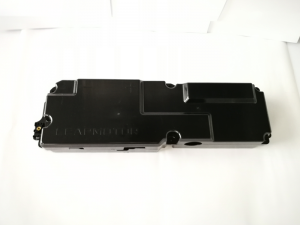1. Polyethylene (PE)
Polyethylene is one of the most widely used plastics in injection molding, known for its low cost and ease of processing. It comes in various forms, including low-density polyethylene (LDPE) and high-density polyethylene (HDPE). LDPE is more flexible and has a lower density, making it suitable for applications like plastic bags and squeeze bottles. HDPE, on the other hand, is more rigid and resistant to impact and chemicals, which makes it ideal for containers, piping, and industrial applications.
2. Polypropylene (PP)
Polypropylene is another popular choice for injection molding due to its excellent chemical resistance, low density, and high melting point. It offers good fatigue resistance and can withstand repeated flexing without cracking. This makes polypropylene ideal for applications such as automotive parts, living hinges, and consumer goods. Its ability to be easily colored and its resistance to staining also contribute to its widespread use in various industries.
3. Polystyrene (PS)
Polystyrene is known for its clarity and rigidity, making it suitable for applications where transparency is required. It is commonly used in the production of disposable cutlery, CD cases, and packaging materials. Polystyrene can be further categorized into general-purpose polystyrene (GPPS) and high-impact polystyrene (HIPS). GPPS is used for applications where rigidity and clarity are important, while HIPS is used where impact resistance is needed.
4. Polycarbonate (PC)
Polycarbonate is a high-performance plastic known for its exceptional strength, transparency, and impact resistance. It is often used in applications where high durability and optical clarity are required, such as in eyewear lenses, automotive headlamps, and electronic components. The material’s ability to withstand high temperatures and its inherent toughness make it a valuable choice for demanding applications.
5. Acrylonitrile Butadiene Styrene (ABS)
ABS is a widely used engineering thermoplastic known for its strength, toughness, and ease of machining. It combines the properties of acrylonitrile, butadiene, and styrene to create a material that offers good impact resistance, rigidity, and surface finish. ABS is commonly used in consumer electronics, automotive parts, and household appliances. Its ability to be easily colored and its resistance to impact and heat make it a versatile material for a wide range of applications.
6. Nylon (Polyamide)
Nylon, or polyamide, is a group of high-performance plastics known for their strength, durability, and resistance to wear and abrasion. It is often used in applications requiring high mechanical strength and resistance to harsh environments. Nylon is commonly used in automotive parts, industrial machinery, and consumer goods. Its ability to absorb moisture can affect its properties, so special grades are available to address this issue.
The choice of plastic for injection mold depends on the specific requirements of the application, including factors such as mechanical properties, chemical resistance, and cost. Polyethylene, polypropylene, polystyrene, polycarbonate, ABS, and nylon are among the most commonly used plastics, each offering unique benefits that make them suitable for various applications. By understanding the properties and advantages of these materials, manufacturers can select the most appropriate plastic for their injection molding projects, ensuring optimal performance and efficiency.












 +1 270-282-2096
+1 270-282-2096
